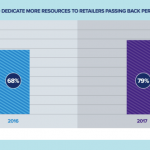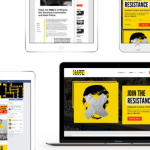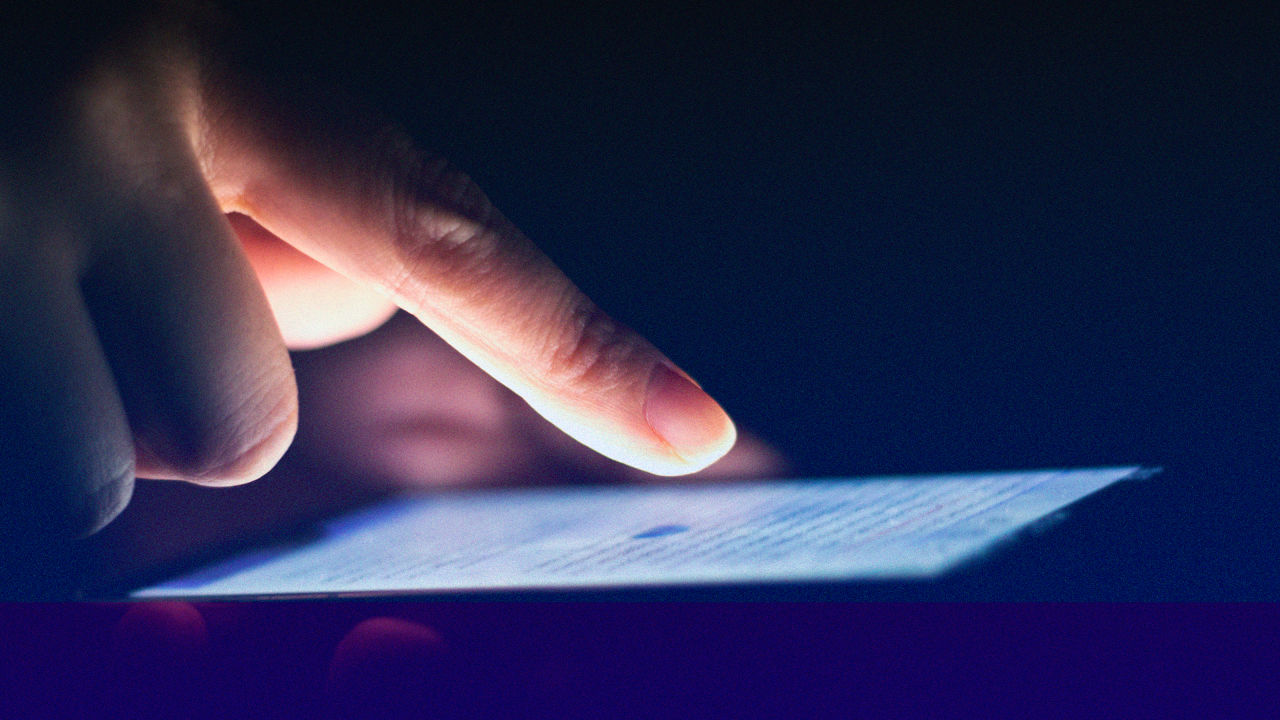The 5 Worst Social Media Practices Brands Should Avoid
You don’t need to look too hard to find brands that have suffered epic social media fails. Like that time Spirit Airlines tried to leverage the sexual abuse caused when hackers stole and leaked privately stored nude photos of female celebrities into a low airfare marketing campaign. Or how about when AT&T tweeted about 9/11 while promoting their phones?
The lure of the medium is powerful. Various studies show that the proper use of social media can increase brand sales by 55% in some cases or by millions of dollars in others. However, in hindsight, the examples above prove that despite the importance and power of social media to brands, there are often times when they are better off stepping away from the keyboard and not posting anything at all.
Whether it’s to avert a social debacle or maintain a growing following, three social media experts reveal some practices to avoid.
1. Don’t Automatically Rely On Auto-Posting
Social media services like Hootsuite and Buffer allow brands to draft social media posts in advance and auto-post at a predetermined time in the future. Yet some brands use these services to their detriment, says Philip Calvert, a social media strategist and professional speaker on social media selling.
“I know a number of financial-services tech companies who are constantly tweeting and posting on social media—all times of day and night, and it’s obvious that they have been preprogrammed with very little thought for whether or not their customers are listening/watching,” says Calvert.
This mechanical posting style can harm a brand’s social media image. Those that rely too much on auto-posting run the risk of turning what should be an informative stream into something that is generic, dull, and predictable.
Calvert says one way brands can identify if auto-posting could potentially be harming their social media presence is by comparing the number of followers a brand has to the number of customers they have. “If there is a big disparity, then it means that the value of their social media activity isn’t yet fully engaging their customers,” Calvert says. Time to replace the auto-poster bot with a human behind the keyboard.
2. Don’t Be Deaf To Tragedy
One of the first places news breaks about a tragedy such as a school shooting, a natural disaster, or a terror attack is Twitter. Although they’re mixed in with sports and tech news and celebrity gossip, once updates on the tragedy start to appear, people’s mind-sets shift. Suddenly, everything else on social media seems trite and unimportant. That change in public perception to non-related tweets is something brands need to be extremely conscious of, says Clare Groombridge, founder and director of South Coast Social Ltd, a boutique social media and marketing agency exclusively for small- to medium-sized businesses.
“We have noticed a real shift in the awareness of brands to the need to be respectful in the wake of devastating news events, such as the tragic terrorist attacks in Paris last year,” says Groombridge, adding:
Many brands who continued with their scheduled content (particularly on Twitter) in the aftermath were publicly lambasted for their insensitivity—demonstrating that although prescheduling content is an excellent way for businesses to maintain their social media accounts, these should still be constantly monitored and accessed, and how to address any such events should form part of your company’s social media policy.
One of the worst examples of a brand caught unawares was Amazon, when its “cereal killer” tweet appeared after the Pulse nightclub shootings earlier this summer. This massive gaffe could have been avoided entirely simply by not posting anything.
Groombridge says that if a brand makes the decision to have a period of silence, a simple tweet explaining why, as a mark of respect is fine. She adds that 24 hours is an appropriate period to maintain a period of silence. “[Entrepreneur and author] Peter Shankman said it best after the Boston Marathon bombings,” says Groombridge. “‘No company ever went broke because they opted to shut up for 24 hours.’”
3. Don’t Think You’re Always Funny
Everyone likes to be the funny person—but humor is subjective. Done well, it increases the likelihood of sharing, and therefore, the brand’s reach. However, when the potential audience of a joke shared on a social feed includes millions of different people—each with their own tastes, temperaments, and outlooks—the risk of falling flat or offending is pretty high.
“Humor is a minefield for brands on social media,” warns Groombridge. “We get asked by brands all the time, ‘Can we be funny?’ and as a rule that’s generally a ‘no.’ Remember, your tone of voice should always feel authentic, not forced, avoiding inconsistencies and sudden moments of cutesiness if that’s not the tone of your brand.”
One of the worst examples of an attempt to be funny that instead came across as insensitive, sexist, and cruel was when IHOP tweeted a picture of a stack of pancakes with the caption “flat but has a great personality.”
“IHOP as a brand is known for their quirky, creative social content using simple tweets such as ‘Pancakes On Fleek’ to gain attention and create talkability among a millennial audience,” says Groombridge. “This time, however, they took it a step too far when their controversial tweet backfired spectacularly and went viral for all the wrong reasons,” she says. “Sexism and casual misogyny are never okay.” asserts Groombridge, “The company apologized and removed the post,” she notes, “but it still lives on as a lesson in knowing where your limits should be when attempting to reach a younger customer base.”
4. Don’t Hijack Trending Topics
Knowing what topics are trending and what hashtags are popular at the moment can be a boon to any social media strategy. Brands do need to be wary of trying to hijack a trending topic hashtag in order to get a little more spotlight time in people’s feeds, says Groombridge.
“As a rule, unless a brand has something relevant to contribute to a topic, then they should carefully consider whether to comment,” she says. “Piggy-backing a trending topic just to get comments or views can often backfire, and result in negative sentiment toward your brand.”
Case in point: Groombridge says the hashtag #WhyIStayed was being used after a video of Ray Rice punching his then fiancee Janay Palmer led to his termination from the Baltimore Ravens. Women took to Twitter using the hashtag to discuss their experiences in abusive relationships. Seeing its popularity, DiGiorno Pizza hijacked the hashtag with a tweet that stated “#WhyIStayed You Had Pizza” without realizing the implications of their lack of research into what the hashtag represented. Its tweet led to a backlash against the brand on social media.
“Remember—trends can evaporate quickly in the fast-paced world of social media, and you can run the risk of appearing out of the loop very fast,” says Groombridge. “Brands should always research the original context of the topic as well.”
5. Don’t Forget To Support Your Critics
No brand likes to be criticized on social media, but one thing brands should never do is remain quiet while one of their critics is being attacked by trolls, says Sofie Sandell, social media speaker and author of Digital Leadership.
One example of poor social media management is when H&M Sweden failed to respond to comments on a post on their Facebook wall. There, a female customer pointed out that one of the printed motifs on an H&M sweater featured Tupac Shakur, a rapper who was found guilty of sexual assault.
“Hey, H&M,” the customer wrote on their Facebook wall, “(September 22, 2016), I strolled into H&M and discovered that you have printed a shirt with the motif of a convicted rapist and now you market this as something cool. Had a T-shirt of Lindgren [a man a repeatedly attacked and raped women in Umeå, Sweden] been equally okay?”
Her post got thousands of comments including a number from people threatening to rape her. “The social media team left [the] comments that were threatening to rape Julia [the commenter] for over a month, even though they promised to remove them,” says Sandell. “H&M should have removed the online assault immediately.” Both H&M and Facebook were condemned for the attacks.
Misogyny and threats of violence should never be tolerated on social media. If your brand remains quiet while trolls attack your critics, your silence could at the very least be viewed as your brand being indifferent to them and at worst be seen as condoning the attacks.
Do Try To Fix It
“Where humans are involved, there will inevitably be social media screw-ups—and in today’s hyperconnected world, people will be very quick to call you to account for your ‘inappropriate’ posts,” says the social media strategist Calvert.
“Yes, a post can be taken down, but far better is to apologize quickly and sincerely,” Calvert says. “Long before we had social media, customer service experts used to tell brands that ‘today’s most unhappy customer could be tomorrow’s best advocate for your business,'” he observes. “It’s the same with social media, too. Brands who pay close attention to this advice might just be in a strong position to turn their social media disasters into a positive outcome.”
Fast Company , Read Full Story
(25)














